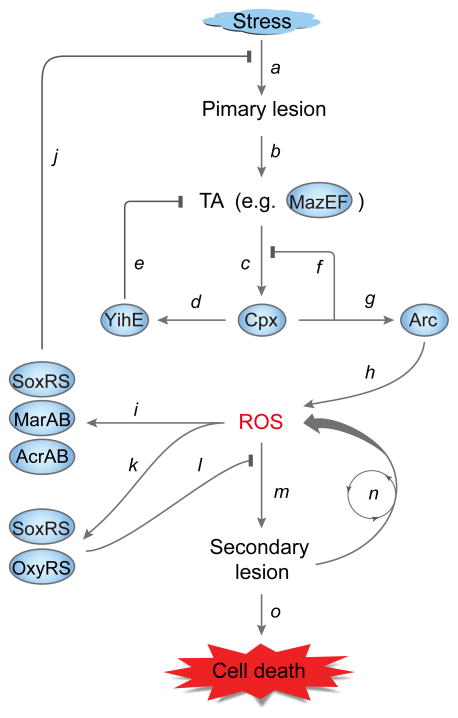Figure 1.
Stress-induced ROS and the live-or-die bacterial stress response. Stress, such as exposure to lethal antibiotics, generates stressor-specific primary lesions (a) that activate toxin-antitoxin modules (TA, for example MazEF, (b)). Toxin-mediated mRNA cleavage may lead to production of truncated, misfolded peptides that lodge in cell membranes and induce the two-component Cpx envelope stress system (c). Induction of Cpx up-regulates expression of YihE protein kinase (d), which mitigates MazF toxin activity (e). Induction of Cpx can also induce expression of genes encoding proteins that refold and degrade misfolded peptides and suppress Cpx induction (f). Cpx activation and membrane perturbation may activate the Arc two-component system (g), which raises ROS levels (h), possibly through stimulation of the TCA cycle and interference with cytochrome bd oxidase [27,28]. Elevated levels of ROS can induce the SoxRS-MarRAB-AcrAB efflux pump system (i) that exports toxic stressors and thereby suppresses primary lesion formation (j). ROS accumulation also induces the SoxRS-OxyRS regulons (k) that interfere with (l) ROS generating secondary cellular damage (m). Secondary damage, if uncontrolled, is expected to stimulate successive rounds of ROS production (n) that kill cells (o), thereby removing severely damaged cells from bacterial populations.

